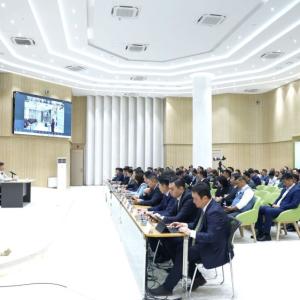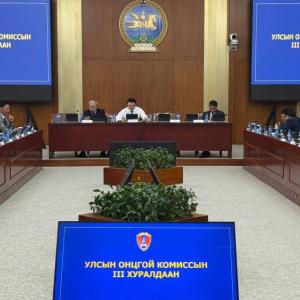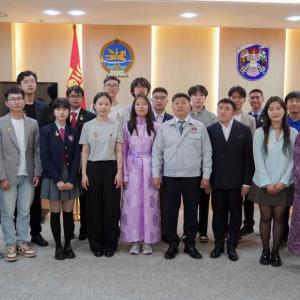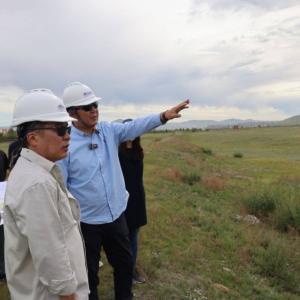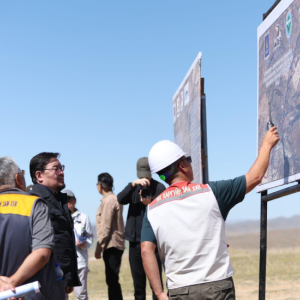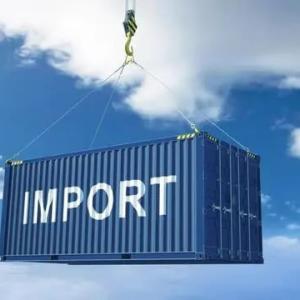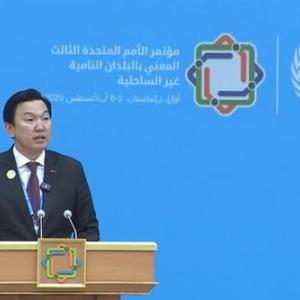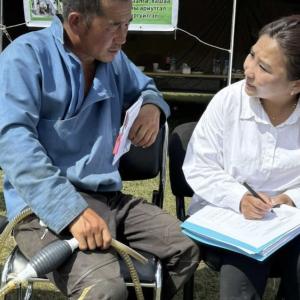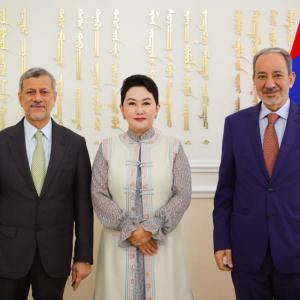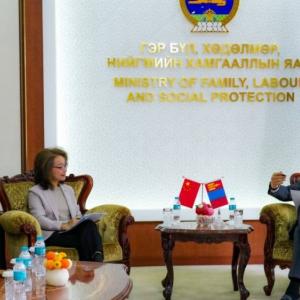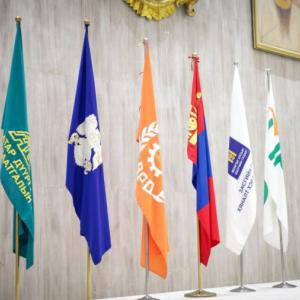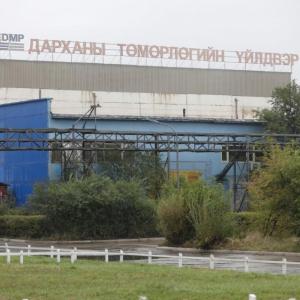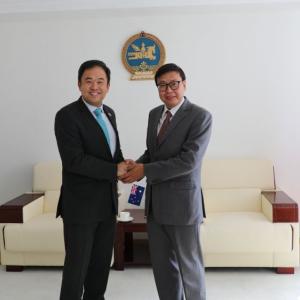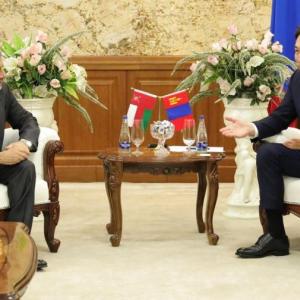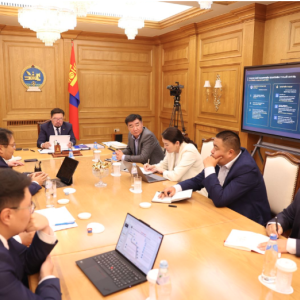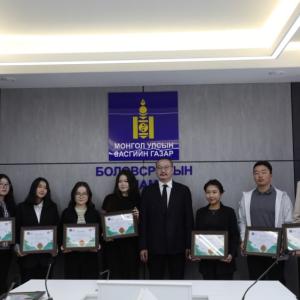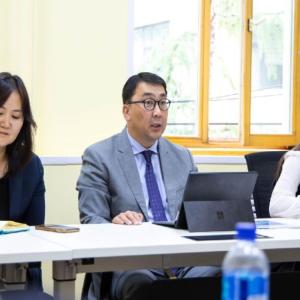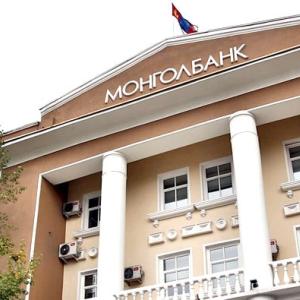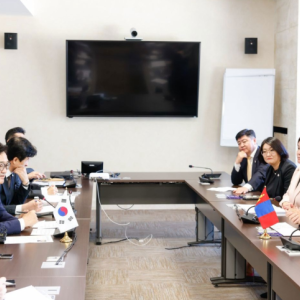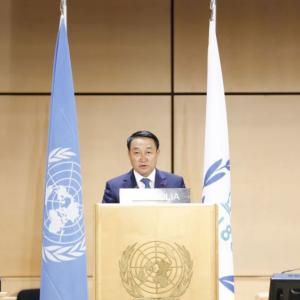N.Bayartsaikhan: The national payment system comes to a new level
The Mongol Messenger
Ulaanbaatar /MONTSAME/.
We did an interview with Governor of the Bank of Mongolia N.Bayartsaikhan on the
modernization of the national payment system.
-One of the duties of the central bank is to control,
manage and monitor the national payment system and its operations. Shall we
start our interview with
the development of the national payment system and how it used to be managed
and controlled?
-The development of the
national payment system infrastructure was done step-by-step by the executives
of Bank of Mongolia over time. With the approval of the Law on the Central Bank
(Bank of Mongolia) on April 20, 1991, there came to be two types of banks:
central bank and commercial bank, with the operations, rights, and duties
regulated by law. However, it was with the 1996 revision of the Law on the
Central Bank that the operations of the Bank of Mongolia in organizing payment
between banks came to be legally regulated. With the approval of the Law on
Banking in 1995, non-cash payments began to be done through payment orders,
invoice, letter of credit, cheque, bill of exchange, and cards.
Afterward, the first
large-scale project on the modification of the national payment system was
implemented with the financial support of the World Bank between 2002 and 2006,
and the National Electronic Transaction Centre (NETC) of the Bank of Mongolia
was established in its framework. NETC is a center that is highly significant
in processing low-value transactions and securing monetary flow.
With the establishment
of the low-value online payment system in 2004 and the interbank card switch
system in 2010, it became possible to do low-value transactions 24/7, enhancing
transaction security, efficiency, and minimizing risk factors. Previously, high
and low-value transactions used to be done through a single system. However,
with the introduction of the real-time gross settlement system (RTGS) in 2009,
all high-value transactions have been done through the system.
Furthermore, one of the
important works that were done in the framework of modifying the legal framework
of transactions is the Law on the National Payment System that was approved in
May 2017 and became fully in effect from January 2018. With aims of
controlling, organizing, regulating and monitoring the national payment system,
the law turns a new chapter for the work being done to modify the national
payment system. The current project being implemented by the Bank of Mongolia
with financing from the Asian Development Bank is the ‘Payment System
Modernization Project’, which has been implemented since 2016. As a result of
these large scale step-by-step measures, the development of our national
payment system continues to move forward.
-You mentioned the ‘Payment System Modernization Project’.
Could you tell us more about the aims of the project, and what is currently
being planned in the project framework?
-The project mainly
aims to bring the national payment system to a new level using the top
technology based on modern trends of payment systems. In the last three years,
the Bank of Mongolia has completed the work on updating the equipment and
technology used at NETC, enhancing the main network, updating the RTGS which is
used for high-value transactions between banks, and establishing the
infrastructure for e-signature at banks and financial institutions. As for the
next step, we have recently begun to work on updating the main data center of
NETC, installing the Automated Clearing House Network (ACH +), purchasing a new
system for the central securities depository, and renewing the national MNT
card with EMV chip technology. Furthermore, with the announcement of an open
international tender to provide and install a registration and internal control
system for the central bank, a partnership agreement has been signed with the
contractor in June 2019.
-Could you give more information on the operations of the
NETC and its further development?
-NETC was established
in 2004, with its main goal as to organize interbank payment and support its
development in the framework of the project implemented by the World Bank.
Since its establishment, NETC has developed to the point that it became the
main center that relays the daily low-value transactions done between banks and
financial organizations in Mongolia at high-level security.
Although people may not
realize it as much, each interbank and interorganizational payment below MNT 3 million
as well as card payments are processed through the NETC infrastructure, and the
guarantee of the transactions are provided through the current accounts of
commercial banks at the Bank of Mongolia.
The infrastructure and human
resource capacity
building development is highly significant in implementing the Bank of
Mongolia’s policy and strategy on the future development of payment system.
Currently, we have started to work on the construction work for the NETC office
and
updating its technology and equipment with the support of ADB in aims of
enhancing the NETC’s infrastructure, capacity development for human resource
and further developing the center. Once the new building of the NETC is put
into operation in 2020, we will establish centers such as a comprehensive IT
center that meets the top modern standards for payment system as well as a
center for data security that will monitor the security of the interbank
network and prevent attacks to the network.
-The topic of data security began to be frequently
discussed with the rapid development of payment systems, and the increase in
use of IT. Could you elaborate on this?
-In general, the
payment system is one of the fundamental infrastructures that
needs
maximum security in each country. Thus, the infrastructure and main systems of
payment for all countries are monitored by the countries’ central bank. As for
our country, NETC of the Bank of Mongolia is responsible for the main system
and infrastructure of interbank payments. The interbank verification system for
e-signature and its infrastructure was established by NETC in 2018. This means
that it is now possible to verify information exchange and transactions by
e-signatures in order to keep security at a high level.
-People consider the national MNT card as an important,
widely used payment instrument that was initiated by the central bank. We use
our MNT cards on a daily basis. As for me, the card has become my main payment
instrument. I believe it is the same case for many other citizens as well.
-The National MNT card
is the most widely used payment instrument used domestically. We are currently
working on using EMV chip technology for our cards in aims of enhancing its
security. Discussions are taking place with large scale
international card companies on the joint implementation of directly
implementing the technological solutions that have already been tested and
guaranteed in our MNT cards.
With a policy on having
the MNT card as the top payment instrument for domestic payments, the Bank of
Mongolia will comprehensively support the use of MNT cards, enhancing its
security and having it be beneficial for MNT card issuers and supporter
organizations. Alongside the work on having EMV chip technology in MNT cards,
we are also working on renewing the logo and design of the card. To have our
national MNT card be available to use for international payments and in foreign
countries, talks are also being held with large scale international
card companies and central banks of foreign countries.
-With our discussion on the work on the Bank of Mongolia
introducing new payment system and advancements, I must ask the following
question. In order to implement this large scale project, will there be any
work done on human
resource capacity building?
-It has become increasingly important to improve the knowledge and skills, have them gain experience and build the capacity of the workers at not only the Bank of Mongolia but also those in the sector. There is a high demand for experienced specialists in IT and finance. With the Law on the National Payment System giving the opportunity to non-bank financial institutions to be participants of the sector and create financial products and services, it has positively affected the human resource development. From our side, step-by-step measures on building the capacity of corresponding specialists of IT and finance at the Bank of Mongolia and commercial banks will be taken, involving them in training.
L.Nandintsetseg

 Ulaanbaatar
Ulaanbaatar


